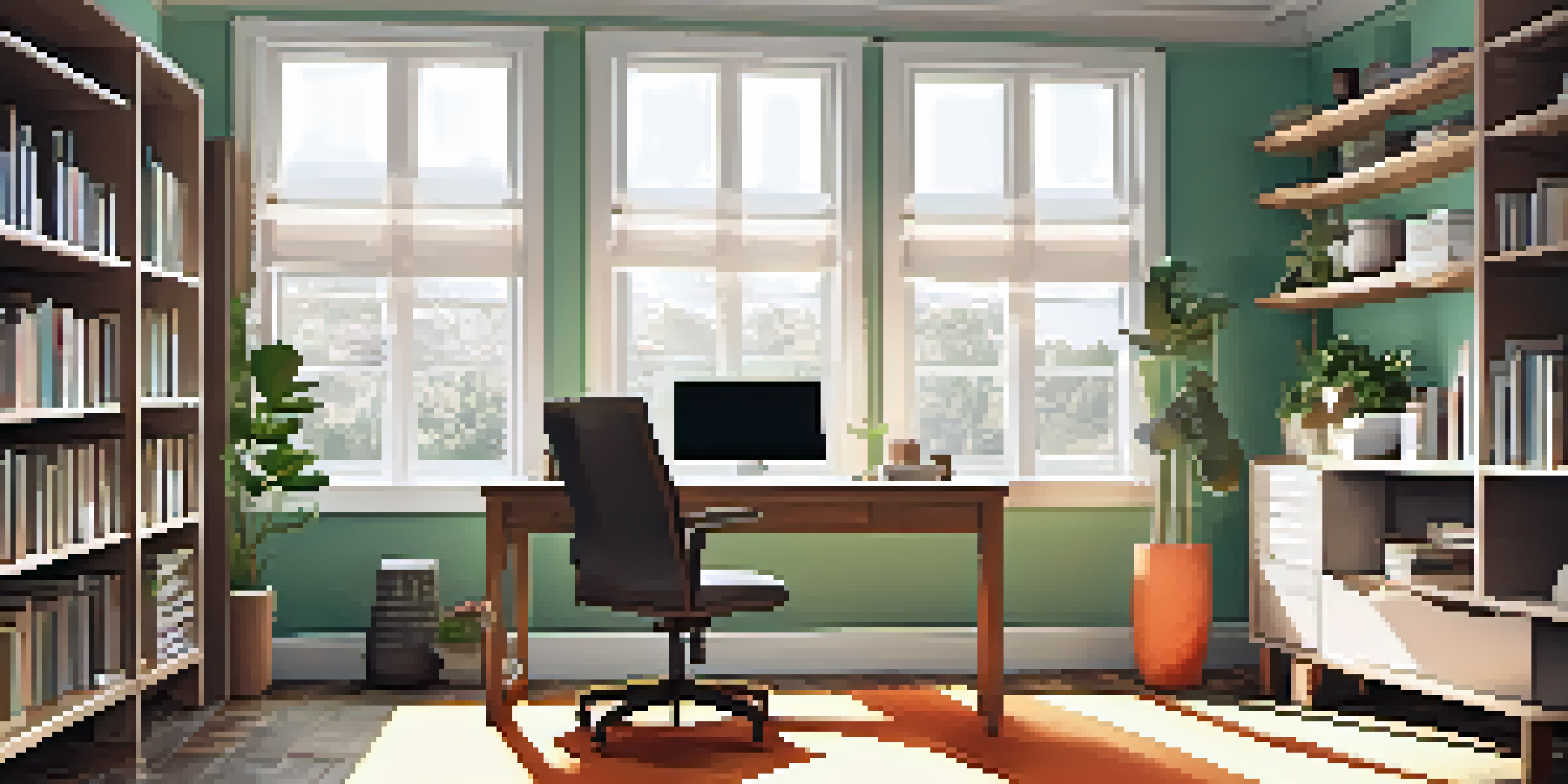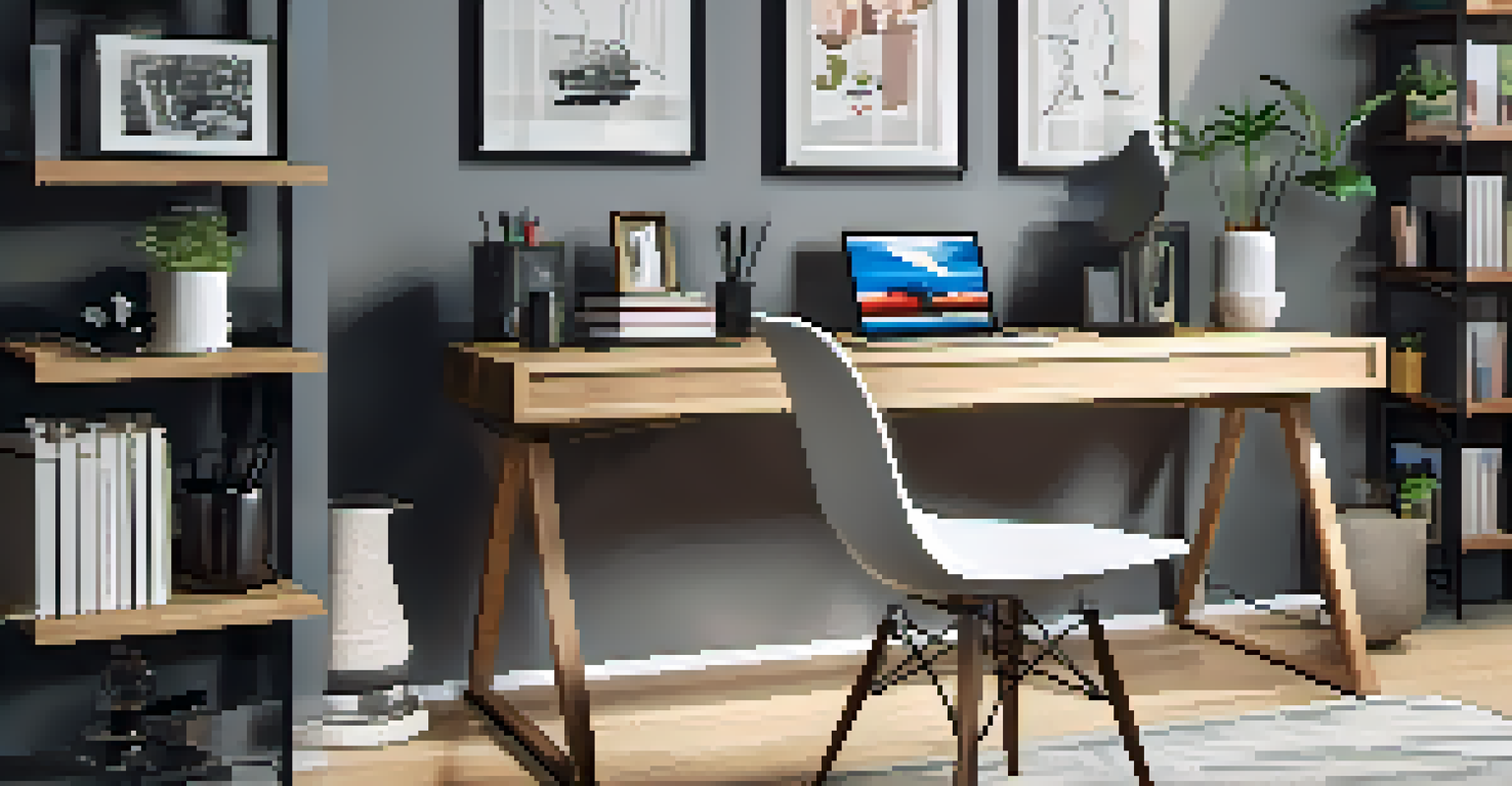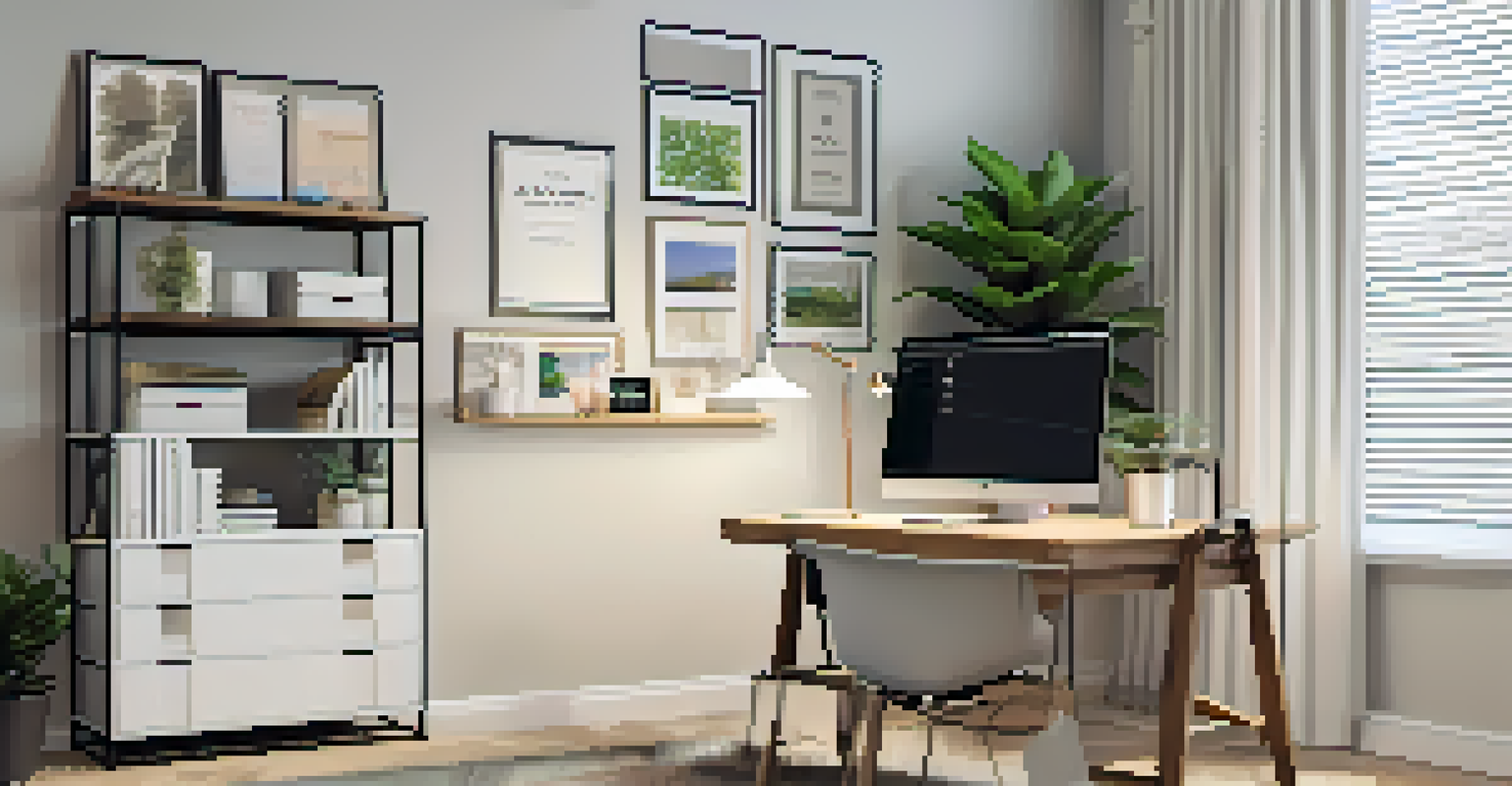Home Office Layouts: Finding What Works for You

Understanding the Importance of Your Home Office Layout
The layout of your home office can significantly impact your productivity and comfort. A well-thought-out space not only boosts efficiency but also promotes a positive mindset. Think of it as your personal command center, where every element works harmoniously to support your daily tasks.
Your workspace should be a reflection of you and your values, creating an environment that inspires creativity and productivity.
Consider how you feel in your current workspace. Are you comfortable? Is everything within reach? By evaluating these aspects, you can identify what adjustments are needed to create an environment that inspires creativity and focus.
Ultimately, the right layout can transform your work-from-home experience. The goal is to create a space that feels inviting and functional, where you can tackle tasks with ease and enthusiasm.
Choosing the Right Location for Your Home Office
Location is crucial when designing your home office. Ideally, you want a space that minimizes distractions while maximizing comfort. This could be a quiet corner of your living room, a spare bedroom, or even a nook by a window for natural light.

Think about the noise levels and foot traffic in potential areas. If your household is bustling, you might need to carve out a more secluded spot. Creating a designated workspace helps signal to yourself and others that it’s time to focus.
Optimize Your Home Office Layout
A well-designed home office layout enhances productivity and creates a comfortable workspace.
Additionally, consider accessibility to essential resources like power outlets, internet connections, and even your kitchen or bathroom. A good location enhances your workflow, making it easier to stay on task throughout the day.
Ergonomics: Designing for Comfort and Health
Incorporating ergonomic principles into your office layout is essential for maintaining comfort and preventing strain. This means selecting furniture that supports your body, such as an adjustable chair and desk at the correct height. Think of it as investing in your well-being; a comfortable setup can lead to higher productivity levels.
The key to a healthy work-life balance is not to separate work and life, but to integrate them harmoniously.
Pay attention to your screen height, keyboard placement, and chair support. Make sure your feet are flat on the ground, and your arms rest comfortably while typing. Small adjustments can make a world of difference in how you feel at the end of the day.
Remember, a comfortable workspace is not just about aesthetics; it's about ensuring you can work effectively without physical discomfort. Prioritizing ergonomics can help you focus better and contribute to your long-term health.
Maximizing Space: Tips for Small Home Offices
If you're working with limited space, maximizing your home office layout is key. Start by decluttering and removing unnecessary items that can crowd your workspace. Think of your desk as a canvas: keep only what you need to create a productive environment.
Utilizing vertical space can be a game changer. Wall-mounted shelves can store books and office supplies without taking up valuable desk area. Additionally, consider multi-functional furniture, like a desk that doubles as a filing cabinet.
Establish Clear Work-Life Boundaries
Setting specific work hours and routines helps maintain a healthy balance between work and personal life.
Don't forget about lighting, too! Good lighting can make a small space feel larger and more inviting. Natural light is ideal, but stylish desk lamps can also brighten up your workspace without overwhelming it.
Incorporating Personal Style into Your Office Design
Your home office should reflect your personal style and inspire you daily. Incorporating elements that resonate with you, like artwork, plants, or color schemes, can create a warm and inviting atmosphere. Think of it as your creative sanctuary, where you feel motivated to work.
Consider how colors affect mood; vibrant hues can energize, while softer tones promote calmness. Personalizing your space not only makes it more enjoyable but also fosters a sense of ownership over your work environment.
Ultimately, your office should feel uniquely yours. By surrounding yourself with items that bring you joy and inspiration, you’ll create a space where you look forward to spending time, enhancing your overall productivity.
Effective Organization: Tools for a Tidy Workspace
An organized workspace is essential for maintaining focus and efficiency. Investing in storage solutions like filing cabinets, desk organizers, and shelves can help keep your essentials within reach while minimizing clutter. Think of organization as the backbone of productivity; a tidy space can lead to a clearer mind.
Establishing a filing system—whether digital or physical—can streamline your workflow. Categorizing documents and supplies makes it easier to find what you need when you need it. Regularly decluttering your space can also help maintain an organized environment.
Incorporate Ergonomics for Comfort
Investing in ergonomic furniture and setups prevents physical strain and supports long-term health.
Remember that organization is an ongoing process. Take a few minutes at the end of each day to tidy up; this simple habit can set you up for success the following morning, creating a seamless transition into your workday.
Creating a Work-Life Balance in Your Home Office
Maintaining a healthy work-life balance is crucial, especially when your home and office are in the same space. Establishing clear boundaries can help you transition between work and personal time. Consider setting specific work hours and sticking to them as you would in a traditional office setting.
Creating rituals to signal the start and end of your workday can be beneficial. Whether it’s a morning coffee routine or a brief walk after work, these habits can help compartmentalize your time, allowing you to fully engage in both work and personal activities.

Lastly, remember to listen to your body and mind. Taking regular breaks to stretch, hydrate, or simply relax can enhance your productivity and prevent burnout. Balancing your work and personal life is essential to maintaining overall well-being.